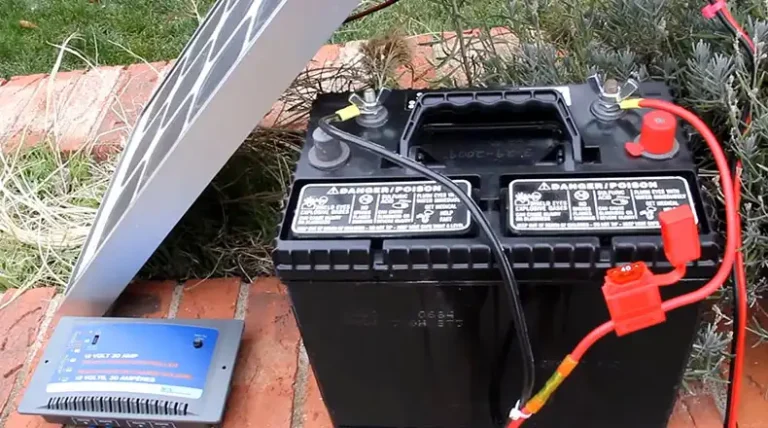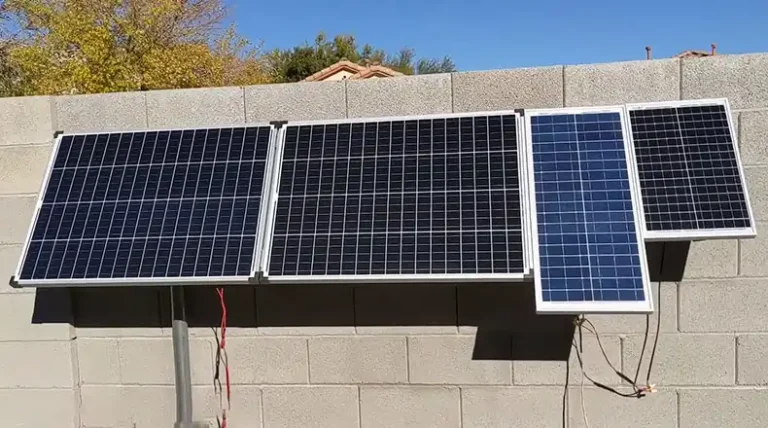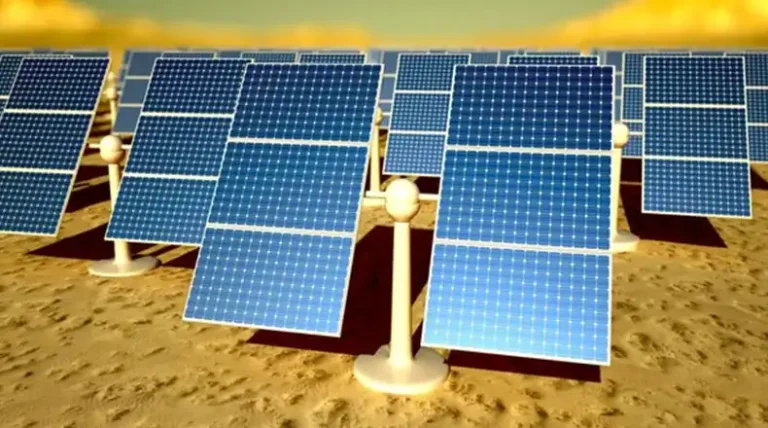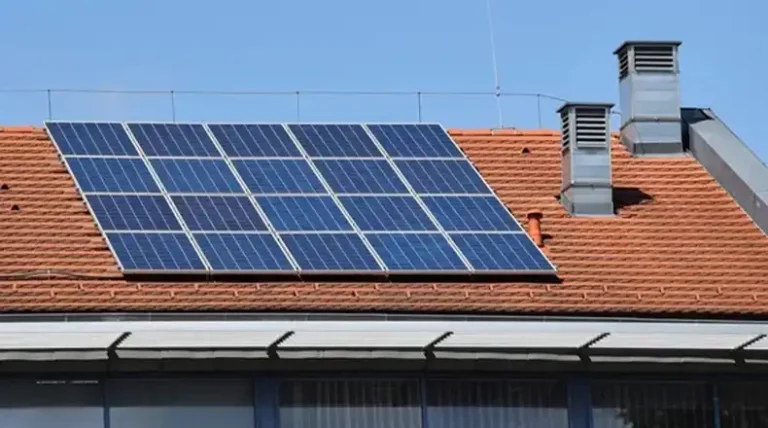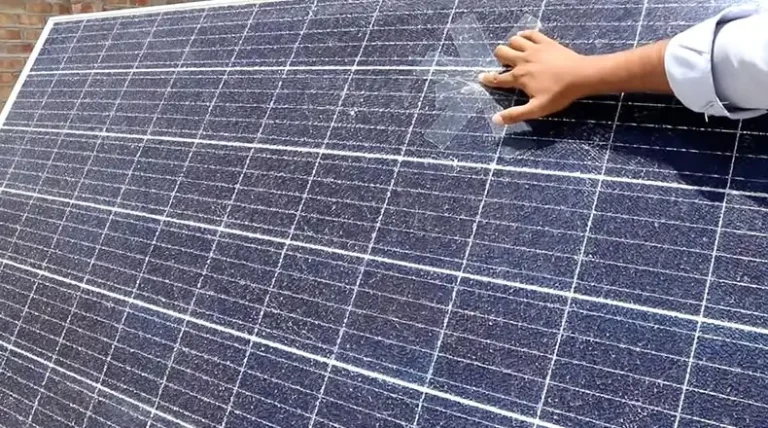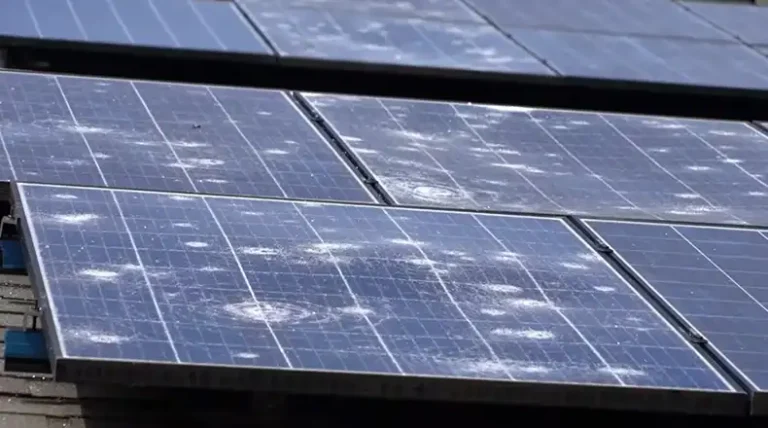Can I Use 48V Solar Panel to Charge 12V Battery?
Charging a 12V battery using a 48V solar panel can seem confusing for those new to solar energy. With the rising popularity of DIY solar projects, many want to know if they can use mismatched solar panels and battery voltages.
Fortunately, the answer is yes, you can charge a 12V battery with a 48V solar panel using a charge controller that steps down the voltage. However, there are important considerations to ensure proper and safe charging.
Don’t worry, I already have covered everything you need to know about using 48V solar panels to charge 12V batteries. I’ve discussed the challenges of voltage mismatch, how charge controllers work, wiring configurations, and safety tips. Read on to learn how to successfully and safely charge your 12V battery bank using 48V solar panels.
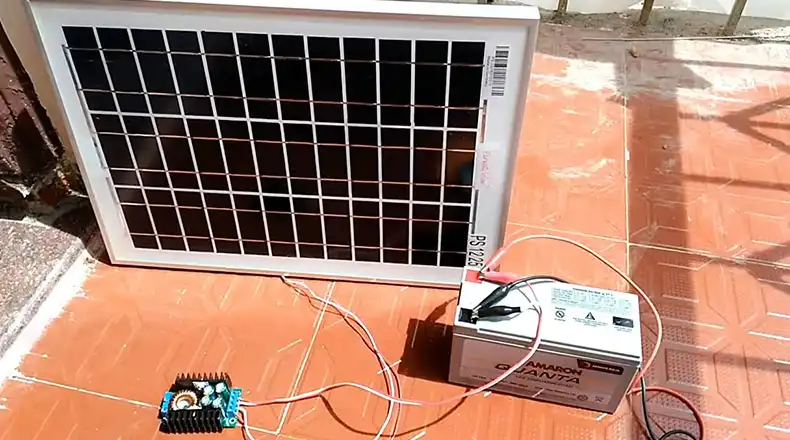
How Does a 48V Solar Panel Charge a 12V Battery?
Charging a lower voltage 12V battery with a higher voltage 48V solar panel is possible with a component called a charge controller. Charge controllers act as the brains of a solar power system, managing the flow of electricity from panels to batteries.
Here is how a 48V solar panel system charges a 12V battery bank:
- Step 1: The 48V solar panels produce DC electricity when exposed to sunlight. They output 48V to match their wire configuration.
- Step 2: The 48V flows into the charge controller, which converts the voltage down to 12V or 24V to match the connected batteries.
- Step 3: Through a process called PWM (pulse-width modulation), the charge controller regulates the charging current and voltage to optimize battery charging and prevent overcharging.
- Step 4: The stepped-down 12V electricity safely charges the connected 12V batteries until they are fully charged. The charge controller then stops or trickles charges to prevent overcharging.
- Step 5: If the batteries are discharged, the process repeats each day, harvesting sunshine energy via the panels and delivering it to recharge the batteries through the charge controller.
So, the charge controller acts as a voltage converter and battery protector, allowing mismatched solar panels and battery voltages to work together to store solar energy.
Challenges of Charging a 12V Battery with 48V Solar Panels
While using higher voltage 48V solar panels to charge lower voltage 12V batteries is possible, there are some key challenges to understand:
- Voltage Mismatch – The most obvious issue is the mismatch between the 48V solar panel output and the 12V battery bank input. Without a charge controller, the panels would damage the batteries due to overvoltage.
- Solar Panel Output Wasted – When stepping down 48V to 12V, a portion of the solar panel wattage is lost. For example, stepping down 400W 48V panels to charge 12V batteries may only deliver 200W or less of charge.
- Requires Charge Controller – A compatible 48V to 12V charge controller is essential for voltage step-down and battery charging management. Without the controller, the system won’t work properly.
- Higher Wire Gauge Needed – 48V systems require thicker wire gauge sizes to handle the increased power output. Insufficient wiring can cause fire hazards.
- More Expensive – 48V solar panels, charge controllers, and wiring are more expensive than 12V or 24V system components. Higher voltages require enhanced safety and performance.
While these challenges exist, they can be addressed with good system design and component selection. When done properly, stepping down 48V to 12V can allow you to benefit from more powerful solar panels.
How Do Charge Controllers Convert Voltage?
Charge controllers use DC-to-DC power conversion circuitry to convert higher solar panel voltage down to the lower battery bank voltage. The key components that allow voltage step down are transformers and converters:
- DC-DC Transformer – A transformer contains two separate coil windings around a ferrite core. By adjusting the windings, the transformer can convert one DC voltage to another lower or higher voltage.
- Buck Converter – This switching regulator topology steps a higher voltage down by rapid on/off switching through an inductor and diode. Varying the switching duty cycle controls the output voltage.
- PWM Regulation – Using pulse-width modulation, the charge controller digitally switches its DC conversion circuitry to maintain optimal output voltage and current for battery charging.
So, charge controllers contain DC power conversion circuitry like transformers and buck converters to convert a higher solar input voltage down to the lower battery voltage. The conversion process allows voltage mismatch between solar panels and batteries while also enabling advanced charging management.
What Size Charge Controller is Needed?
When selecting a charge controller for a 48V solar panel and 12V battery system, the two key factors are:
Voltage – The charge controller must accept a 48V solar input and provide a 12V or 24V battery output.
Amperage – The controller must be rated for at least the total short circuit current rating of the solar panels.
For example, if using two 250W 48V panels with 8A short circuit current, the charge controller must be:
- 48V input battery output.
- Rated for at least 16A (8A x 2 panels) or higher.
Oversizing the controller amperage provides headroom and allows for adding more panels later. A 48V 30A MPPT charge controller would work well in the above example.
Higher-wattage systems require higher voltage/amperage charge controllers. Always check the solar panel and battery specs when sizing the charge controller.
What is the Best Wiring Setup?
For a 48V solar panel to the charge controller to 12V battery setup, the proper wiring setup is:
- Use 10AWG or thicker wire for the 48V connections from the solar panels to the charge controller. This handles the higher solar panel amperage.
- Run wiring from the charge controller 12V/24V output to the batteries using 10AWG wire for up to 10 feet or 8AWG for up to 20 feet. Match wire gauge to distance.
- Use copper wiring for best efficiency and minimize voltage drop. Use conduit or outdoor-rated cable for protection.
- Ensure all connections are secure, corrosion-free, and protected from weather. Use ferrule crimp connectors or solder/heat shrink connections.
- Ground the system properly per code requirements to ensure safety. Lightning protection is also recommended.
Correct wiring is essential for efficiency, voltage drop, and safety. Follow size, connection, and installation best practices when wiring 48V solar panels to a charge controller and 12V battery bank.
Example Solar Setups with 48V Panels & 12V Batteries
Here are two examples of solar power systems using 48V solar panels to charge 12V battery banks:
Small 100W Solar Generator
- 1x 100W 48V Solar Panel
- 48V 20A MPPT Charge Controller
- 1x 100Ah 12V Sealed Lead Acid Battery
- Cables, fuses, conduit, and grounding equipment
This compact setup could provide 100W of solar charging to a small 12V battery for off-grid cabins or RV use.
Large 1kW Off-Grid Solar System
- 4x 250W 48V Solar Panels (1000W total)
- 48V 60A MPPT Charge Controller
- 4x 150Ah 12V AGM Batteries (600Ah 12V bank)
- Cables, combiner box, fuses, safety gear
This larger system provides 1kW of solar power to a high-capacity 12V battery bank for a robust off-grid solar power system.
These examples illustrate how 48V solar panels and 12V batteries can be combined in different ways for DIY or commercial solar projects. Follow wiring best practices and properly size components.
Can I Connect Batteries in Series to Match 48V Panels?
Instead of stepping down solar panel voltage, some may wonder if batteries can be wired in series to step up their voltage to match 48V panels.
You can theoretically connect 12V batteries together in series to create a 48V battery bank. Four 12V batteries in series make a 48V bank.
However, this is not recommended for a few key reasons. Battery banks in series are less flexible if you want to change voltage later. If one battery fails, it can damage the whole series connection. Charging multi-battery series banks requires very advanced charge controllers. Mismatched batteries will fail quickly. 12V accessories and inverters would require their own voltage converters to work with a 48V battery bank.
For most DIY solar users, using a charge controller to step down 48V panels to charge 12V batteries in parallel is much simpler and safer. Avoid series battery banks unless you deeply understand the risks.
5 Key Tips When Using 48V Panels with 12V Batteries
Here are 5 quick tips to follow when charging 12V batteries from 48V solar panels:
- Use an appropriate MPPT charge controller – Get a 48V solar input to 12/24V output charge controller rated for your system size.
- Wire properly – 10AWG for 48V, 8-10AWG for 12V. Keep cable runs short. Ensure secure connections.
- Protect batteries – Use appropriate battery types and don’t overcharge. Keep batteries maintained.
- Ground everything – Proper system grounding improves safety and performance. Add lightning protection.
- Monitor performance – Use a meter display or battery monitor to track voltage and troubleshoot.
Following these tips will help ensure your 48V solar panels safely and efficiently charge your 12V battery bank for an effective solar energy system.
People Also Asked
What Size Charge Controller Do I Need For A 48 Volt Solar System?
Choose a charge controller that is rated for at least the total short circuit current (amps) of your solar array. Also, ensure it can handle the full open circuit voltage from the panels. It’s best to oversize the voltage and amperage capacity by 25% or more to allow for expansion.
What Gauge Wire Should I Use For A 48 Volt Panel To Charge A 12 Volt Battery?
For 48V solar input wiring, use 10 AWG cables or thicker for runs up to 5 feet. For the 12V output charging wiring, 10 AWG can work for up to 10 feet, while 8 AWG is better for up to 20 feet length. Follow wiring gauge charts to select the proper wire size for your system’s amperage and distance.
Can I Use A 48 Volt MPPT Charge Controller For A 12 Volt Battery?
Yes, a 48V MPPT charge controller with a 12V output mode can charge a 12V battery bank, even from 48V solar panels. The MPPT controller will step down the solar panel voltage while optimizing the power transfer and providing full battery charging management. Just ensure the controller is rated for your solar array and battery amp hours.
Is It Better To Use 48 Volt Or 24 Volt Solar Panels For Battery Charging?
Most DIY and residential systems work well with 24V solar panels and batteries in terms of cost, efficiency, and component selection. However, larger off-grid 48V systems can be beneficial for higher wattages given reduced amperage and thinner wire gauge requirements. Evaluate your specific needs when choosing a system voltage.
What Is The Best Way To Charge A 12 Volt Battery From A 48 Volt Solar Panel?
The best way is to use an MPPT charge controller that can accept a 48V solar input and convert it to a 12V (or 24V) output to charge the batteries. The controller handles the voltage step down through DC conversion technology while also optimizing power transfer and managing the battery charging process.
Can I Wire Two 12 Volt Batteries In Series To Make 24 Volts For A 48 Volt Solar Panel?
Technically you can wire two 12V batteries in series to make a 24V battery bank, which would better match a 48V solar panel voltage. However, it’s usually easier and safer to use a charge controller to convert the 48V down to 12V or 24V to charge batteries in parallel. Wiring batteries in series requires extra precautions and more advanced charge controllers.
End Notes
Charging a 12-volt battery bank from 48-volt solar panels is definitely possible with the right components and wiring configuration. By using an MPPT charge controller designed for 48V input to 12V output, the higher solar panel voltage can be safely stepped down to charge lower voltage batteries. Just be sure to follow proper wiring guidelines and specify the charge controller correctly for your system size. A well-designed 48V solar panel to the 12V battery system can provide efficient, cost-effective solar energy harvesting. Carefully consider the pros and cons and evaluate component options for your specific project needs. We hope this guide has helped answer your questions about using 48V solar panels to charge 12V batteries. Please leave a comment below if you have any other questions! Thanks for reading.

